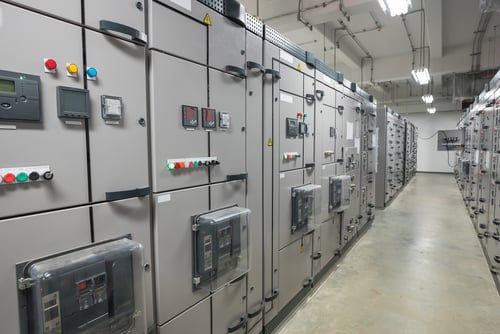Electricity is a fundamental service in the modern world, as it provides the fastest and most efficient way of supplying large amounts of energy. However, this power supply capacity also makes electricity dangerous if not handled properly. This is precisely what electrical engineering is about: harnessing the power of electricity safely.
Electrical installations take up much less space than mechanical and plumbing systems, but they are the backbone of many building services. A well-designed electrical installation can provide adequate voltage and power for each device, while also including protective measures against all types of electrical failures.
Get a professional electrical design for your construction project.
What are the types of electrical faults?
Among the general public, electrical faults and short circuits are seen as equivalent concepts. However, there are other types of faults besides short circuits, and the following are some examples:
-
A ground fault occurs when an energized conductor touches an object or surface that is not part of the circuit.
-
A line-to-line fault occurs when two conductors energized at different voltages touch.
-
An arc fault is an electrical discharge that travels through the air.
-
An overload occurs when an electrical device draws current above its rated value.
These problems typically trigger an immediate response from electrical protection devices. However, there are other less serious conditions that cause long-term damage. A common example is undervoltage, which occurs when a power system has a supply voltage lower than the nominal value of the connected devices. In electrical systems with several phases, there may also be voltage imbalance between phases.
How Electrical Engineers Prevent Failures
It is common knowledge that an exposed live wire presents a danger. Electrical wiring is coated with insulation and introduced into the conduit, providing two layers of protection. However, insulation can melt if a wire carries current in excess of its capacity, and electrical engineers must ensure that specified wiring sizes are sufficient for the expected current.
When a wire has adequate ampacity, the insulation will not melt under normal operating conditions. If an electrical fault increases the current, electrical protection devices will disconnect the circuit before the high current can cause damage.
Earth faults and arc faults are particularly dangerous: they can produce currents that are not high enough to damage wiring, but of sufficient magnitude to cause an electric shock or start a fire. In applications where these types of faults are a risk, electrical engineers specify ground fault circuit interrupters (GFCI) and arc fault circuit interrupters (AFCI).
The importance of optimal spinning capacity

When selecting wire, electrical engineers focus on finding the ideal ampacity depending on the application. Undersized wiring is dangerous because its insulation can easily melt, causing an electrical failure. However, oversized wiring represents an unnecessary expense. Also consider that a higher current capacity does not result in greater safety:
-
If the wiring is oversized, there is no safety benefit because the conductors are already protected by the circuit breaker.
-
On the other hand, if the circuit breaker is oversized, it may allow currents above the capacity of the wiring. In other words, an oversized circuit breaker creates an unsafe condition.
-
If the wiring and circuit breaker are oversized, devices connected to the circuit will not be protected from overload. For example, if the wiring and circuit breaker are rated for 50 amps, an appliance rated at 10 amps will not be effectively protected.
In a nutshell, an electrical installation is safe when the capabilities of the wiring and circuit breakers are optimized. Both oversizing and undersizing have negative consequences.
When energy efficiency measures are implemented, it may be possible to specify an electrical installation with reduced cabling capacities. Safety is not compromised in this case, since the current consumed by electrical equipment is lower.
Conclusion
A well-designed electrical installation is also a safe installation. When you work with qualified electrical engineers, they perform a detailed analysis of all electrical loads and potential fault conditions to specify suitable conductors and protective devices.
Professional electrical engineering services also ensure code compliance, ensuring quick project approval. To minimize fire risks, electrical installations must be designed in accordance with the National Electrical Code (NEC) NFPA 70. Additionally, specified components must have certification marks from a Nationally Recognized Testing Laboratory such as UL or ETL.

